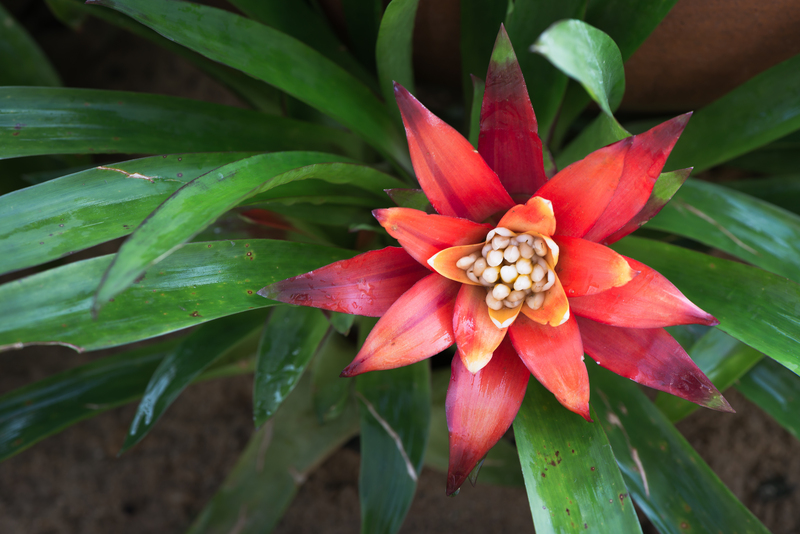Rekindling the Beauty of a Long-Neglected Garden
Posted on 03/09/2025
Rekindling the Beauty of a Long-Neglected Garden
There is something magical about restoring a long-neglected garden. Over time, our gardens can fall into disrepair, choked by weeds, overgrown shrubs, and faded memories of past blooms. Yet, within every forgotten plot lies the potential for revival. If you dream of rekindling the beauty of a once-glorious space, embracing the power of transformation can bring about a vibrant and thriving garden once more.
Why Bring Back the Beauty of an Old Garden?
Rejuvenating a neglected garden is much more than a simple landscaping task. It's an invitation to connect with nature, enhance your home's value, and create a personal retreat. The process can restore biodiversity, provide food and habitat for wildlife, and offer immense satisfaction as you watch a deserted space blossom once again.
- Eco-friendly Restoration: Revitalizing a garden reduces waste by reusing existing plants and soil.
- Mental Health Benefits: Spending time in a revived garden can reduce stress and improve well-being.
- Increased Curb Appeal: A flourishing garden instantly boosts the aesthetic of any property.
- Personal Fulfilment: There's a deep sense of achievement in bringing back life to a forgotten garden space.

First Steps: Assessing the State of Your Neglected Garden
The journey to restore a neglected garden starts with a careful assessment. Take time to walk through your garden and note:
- The types and health of existing plants
- Areas dominated by weeds or invasive species
- Soil quality and compaction
- Presence of pests or signs of disease
- Pathways, borders, and structural elements needing repair
Sketch out your garden or take digital photos to document before and after transformations. Understanding the scope of work will help you set realistic goals and timelines.
Clearing and Cleaning: The Foundation of Garden Revival
Remove Weeds and Debris
Start by clearing away weeds, fallen branches, dead plants, and accumulated trash. Tackle thorny brambles with thick gloves and use appropriate tools for stubborn growth. A clean slate allows you to see your garden's potential and identify any hidden treasures, like surviving bulbs or perennial roots.
Prune Overgrown Shrubs and Trees
Overgrown bushes and trees can block light and make a garden feel cramped. Prune dead or damaged branches, shape shrubs for better airflow, and remove suckers from tree bases. Be gentle--major pruning is best done in dormancy to avoid shocking plants.
Restore Hardscaping Elements
Paths, patios, and retaining walls often disappear under weeds or debris in a forgotten garden. Clean up, repair loose stones, and re-gravel or mulch paths. If fences or trellises have decayed, consider repair or replacement to frame your revitalized landscape.
Soil Revitalization: Preparing for New Growth
Healthy soil is the backbone of every beautiful garden. Test your soil for pH and nutrients. Over time, neglected soils can become compacted and nutrient-poor. To revive:
- Aerate the soil to improve drainage and airflow.
- Add organic matter such as compost, aged manure, or leaf mold to boost fertility.
- If necessary, adjust pH with lime (to reduce acidity) or sulfur (to increase acidity).
- Mulch generously to protect and enrich soil while suppressing future weeds.
Tip: Healthy soil supports stronger, more resilient plants, giving your restored garden the best chance at long-term vitality.
Planning Your Garden's Renaissance
With a tidy foundation, you can now plan your garden's rebirth. Reflect on what you would like to achieve: a lush flower border, a tranquil shade retreat, edible beds, wildlife habitat, or perhaps a blend of these elements.
Evaluate Existing Plants
Not everything in an abandoned garden is lost. Some perennials, bulbs, shrubs, and trees endure years of neglect and can become the backbone of your new oasis. Carefully identify what can be retained, relocated, or divided for propagation.
Design Around Structure and Light
- Sunlight: Track the sun's path and note which areas receive full sun, shade, or partial sun. Place plants accordingly for optimal growth.
- Focal Points: Work around mature trees, stonework, or established flower beds to create visually appealing zones.
- Pathways: Consider how people will move through the garden. Restore or add meandering paths to guide visitors and create a sense of discovery.
Planting Choices for a Restored Garden
Choosing the Right Plants
To ensure success in reviving a neglected plot, focus on robust, low-maintenance plants suited to local climate and soil. Include a mix of perennials, shrubs, groundcovers, and flowering annuals for continuous interest throughout the seasons.
- Native plants: These require less maintenance and support butterflies, bees, and birds.
- Drought-tolerant species: Especially important if water access is limited.
- Fast-growers: Such as daylilies, hostas, or sedums which can quickly fill bare spots.
- Evergreen shrubs: Add year-round structure and color.
Don't be afraid to experiment. Try a mix of textures, heights, and colors. Incorporate fragrant plants to delight senses, and add edibles like herbs, fruiting bushes, or salad greens for a productive touch.
Spacing, Layering, and Mulching
- Plant densely enough to shade out future weeds, but leave enough space for mature size.
- Layer tall plants in the back, mid-sized in the center, and groundcovers along edges for a full, harmonious look.
- Mulch new plantings to retain moisture, reduce weeds, and provide slow-release nutrition.
Reviving the Garden's Biodiversity
Restoring a long-neglected garden is an opportunity to attract beneficial wildlife. Incorporate flowering plants, water sources, and habitat features to entice pollinators and songbirds.
- Add a birdbath, bee hotel, or small pond.
- Plant a range of blooms to ensure nectar throughout the growing season.
- Leave some leaf litter and dead wood for overwintering insects and amphibians.
Increasing habitat complexity brings the garden alive in new and unexpected ways.
Addressing Challenges in Restoring Neglected Gardens
Tackling Invasive Weeds
Some neglected plots may be dominated by invasive species like bindweed, Japanese knotweed, or ivy. These require consistent, methodical removal--often over several seasons. Use sheet mulching, hand-pulling, and, if necessary, targeted herbicide applications (always follow eco-friendly guidelines).
Dealing With Poor Drainage
Overgrown and compacted soils may not drain well, leading to root rot and plant failure. Raise beds, incorporate sand or gravel, and plant only tolerant species in persistently soggy spots.
Managing Pests and Diseases
Revived gardens can attract pests. Promote natural predators, use companion plants, and inspect regularly for outbreaks. Organic solutions like neem oil or horticultural soaps can manage most infestations without harming beneficial insects.
Long-Term Care: Sustaining Your Restored Garden
Creating a Simple Maintenance Routine
- Check your garden weekly for new weed growth and remove promptly.
- Water deeply but less often to encourage deep-root systems.
- Fertilize with organic amendments such as compost tea or slow-release pellets as needed.
- Prune shrubs and deadhead spent blooms regularly to encourage healthy, continued growth.
Seasonal Projects to Enhance Beauty
Each season presents unique opportunities to enhance your revitalized garden's beauty:
- Spring: Split and transplant perennials, sow seeds, and refresh mulch.
- Summer: Plant annuals for splashes of color and pay attention to watering as temperatures rise.
- Autumn: Plant spring bulbs, tidy leaves, and add compost.
- Winter: Protect tender herbs, prune dormant plants, and plan for the coming year.

Celebrating and Enjoying Your Restored Garden
Take time to enjoy your healed green sanctuary. Add special touches--benches, sculptures, or fairy lights--to make your outdoor retreat uniquely yours. Invite friends and neighbors to share in the beauty and tranquility you've revived.
Record your garden's journey in a photo diary, or share your progress online to inspire others to embark on their own garden restoration project.
Conclusion: The Joy of Bringing a Garden Back to Life
The process of rekindling the beauty of a long-neglected garden may seem daunting, but each step brings fresh hope and the joy of watching life return. Whether you restore an inherited backyard, neglected allotment, or a forgotten public plot, your efforts will nurture not just plants, but happiness and community for years to come.
Your neglected garden holds the promise of beauty, life, and serenity. Let your hands and heart guide you, and soon you'll witness the spectacular transformation of a once-lost paradise into a flourishing personal retreat.
- Begin now: every garden--no matter how wild--deserves a new beginning.

